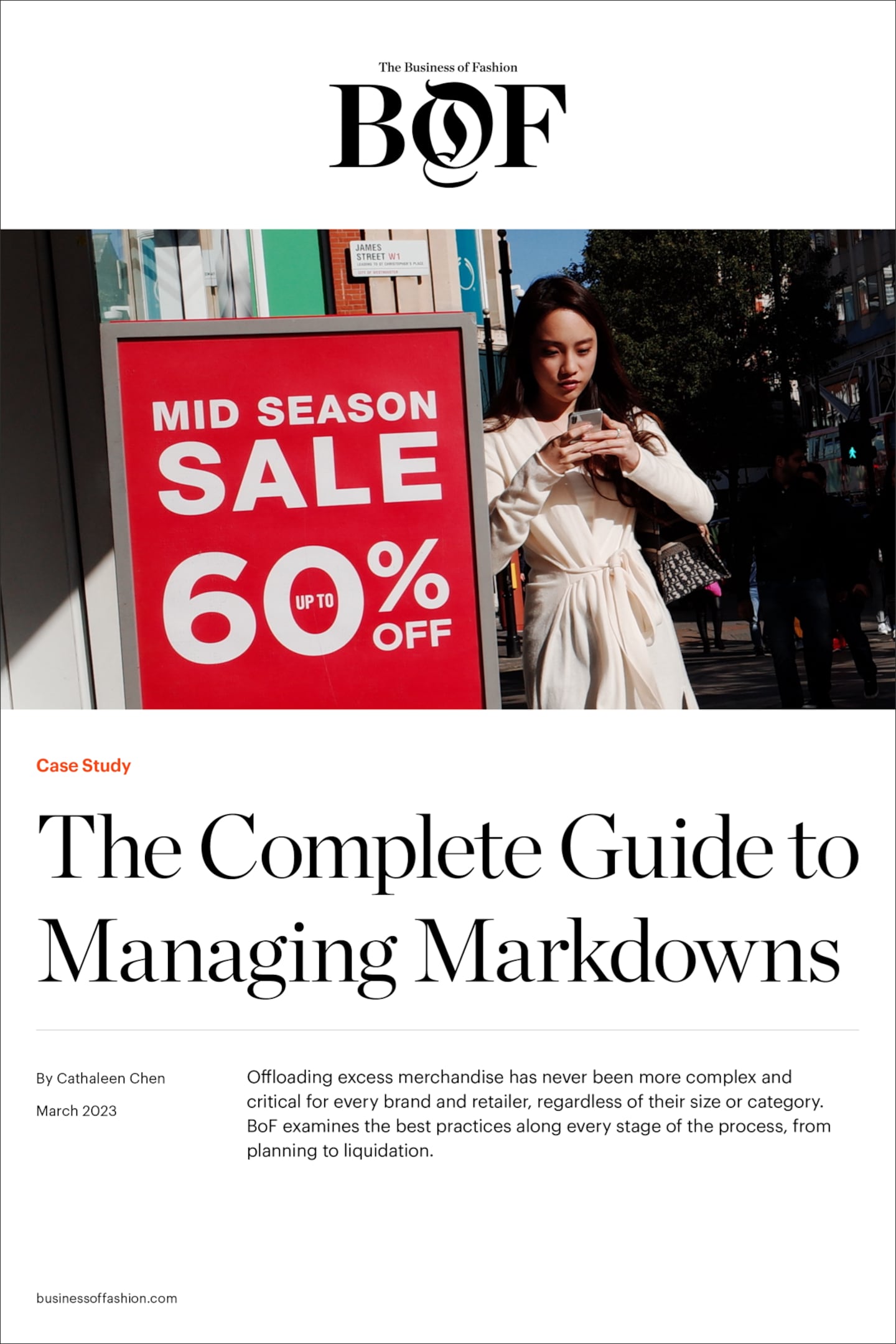
The Business of Fashion
Agenda-setting intelligence, analysis and advice for the global fashion community.

Agenda-setting intelligence, analysis and advice for the global fashion community.

As a kid in the 1990s, Trisha Okubo remembers shopping at Gap and Banana Republic in her local mall. But those mall visits didn’t mean she went home laden with shopping bags — in fact, whenever she saw a shirt or a pair of trousers she liked, she’d wait until they went on sale. And inevitably, they would.
Years later, as Okubo built her own jewellery brand, she knew she didn’t want her shoppers to have the same expectation for discounting.
“I didn’t want to fall into that trap,” she said.
Of course, that’s easier said than done. When planning a season’s worth of products, it’s impossible to know the exact consumer appetite for each style. Trends come and go overnight. Especially since the pandemic, consumer sentiment can be tepid one day, spike the next and then plummet just as fast.
ADVERTISEMENT
Too conservative of an approach to inventory means missing lucrative full-price sales and risking shopper disappointment — an opportunity cost that most brands are reluctant to bear, especially if they answer to public shareholders every quarter. More often, retailers overestimate demand, and are stuck with excess goods with no other option than to mark down prices.
“First of all, the approach should be to minimise markdowns as much as possible in matching supply and demand better,” said Cowen analyst Oliver Chen.
The consequences of a product glut can be dire, as not only Gap and Banana Republic but also countless other mall retailers have learned in the past two decades. A constant stream of promotions can cause irrevocable damage to the perception of a brand, effectively conditioning consumers to wait for prices to fall or skip retail altogether and head straight to off-price retailers like Saks Off Fifth or T.J. Maxx (T.K. Maxx in the UK).
In certain European markets, markdowns and promotions are government regulated. Federal policy in France, for instance, limits promotions to two periods in the summer and winter. But in North America, the UK and other parts of the world, fashion companies are left to their own discretion for discounting strategies. They can mark down as much of their assortment as frequently as they’d like, for better or for worse.
Marketing plays a key role in underscoring the value of a retailer’s offering. Creative promotions, such as product bundles or personalised shopping events, can also help reduce the need for discounting. In the last segment of the inventory cycle, brands and retailers can look to third-party platforms to help offload leftover merchandise.
While there is no single blueprint suitable for every brand or retailer, the objective of this case study is to unpack the full inventory and markdown process and identify best practices in each stage, from the “test, read and react” approach in the planning stage to working with the most innovative start-ups in the liquidation space.

After avoiding markdowns for much of the last two years, many brands returned to their old ways this holiday season. Are discounts a necessary evil?
A combination of shipping delays and misjudging consumer demand has caused stockpiles to come roaring back. Retailers are using discounts and more creative measures to bring them back down.
Artificial intelligence is replacing intuition when it comes to determining what shoppers will pay.

Cathaleen Chen is Retail Correspondent at The Business of Fashion. She is based in New York and drives BoF’s coverage of the retail and direct-to-consumer sectors.
The British musician will collaborate with the Swiss brand on a collection of training apparel, and will serve as the face of their first collection to be released in August.
Designer brands including Gucci and Anya Hindmarch have been left millions of pounds out of pocket and some customers will not get refunds after the online fashion site collapsed owing more than £210m last month.
Antitrust enforcers said Tapestry’s acquisition of Capri would raise prices on handbags and accessories in the affordable luxury sector, harming consumers.
As a push to maximise sales of its popular Samba model starts to weigh on its desirability, the German sportswear giant is betting on other retro sneaker styles to tap surging demand for the 1980s ‘Terrace’ look. But fashion cycles come and go, cautions Andrea Felsted.